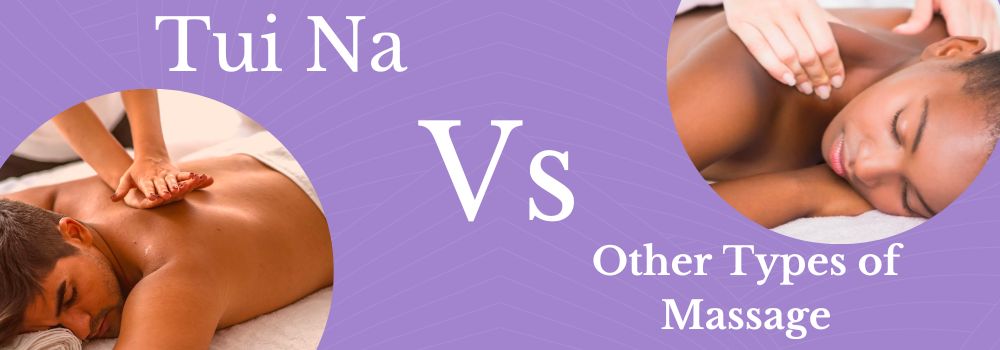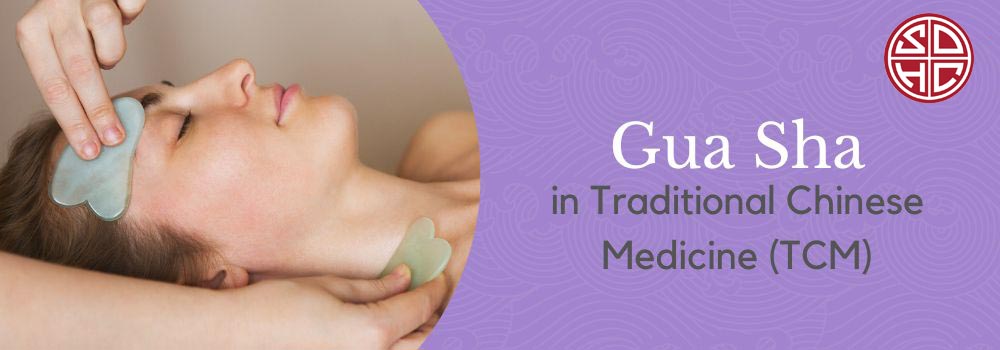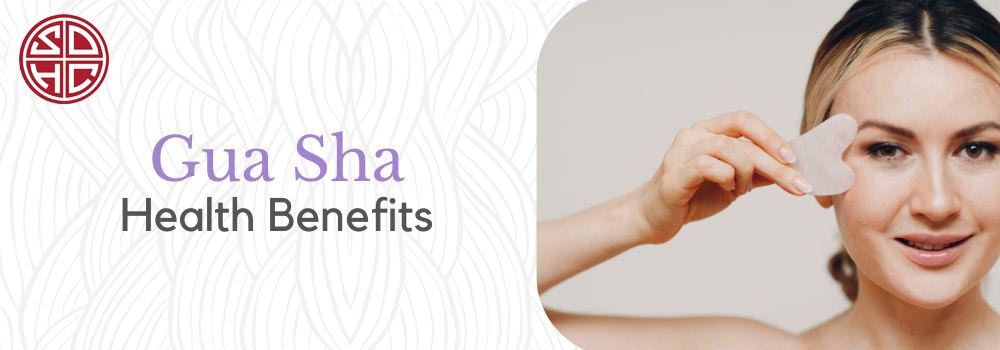Tui Na Massage and Gua Sha: Ancient Practices for Ultimate Wellness
In today's fast-paced world, the wisdom of ancient healing remains captivating for those seeking holistic well-being. Tui Na and Gua Sha, originating from Traditional Chinese Medicine (TCM), offer deep wisdom to nurture harmony between your body, mind, and spirit.
Keep reading to discover the infinite potential of Tui Na and Gua Sha, foster a harmonious balance of ancient wisdom to modern needs, and start your journey towards a balanced and vibrant lifestyle.
What is Tui Na Massage?
Tui Na (pronounced twee-nah) massage is the therapeutic practice of Chinese bodywork that encompasses skillful manipulation of the body's meridians, muscles, and nerves to tackle a variety of physical and internal health conditions.
The term Tui Na derives from two Chinese action words, where "Tui" signifies "pushing" and "Na" denotes "lifting or squeezing." Within the artful realm of Tui Na, certain techniques, like brushing, kneading, rolling, pressing, rubbing, etc, are employed manually to maximize therapeutic effects for every individual.
Tui Na History and Origin
Tui Na, or Chinese medical massage, is one of the oldest healing techniques that originated in ancient China and dates back to 2700 B.C., as Archaeological studies deduced. Over time, this ancient art evolved and gained popularity beyond China.
In 1975, it was initially introduced in the United States by Share K. Lew. Nowadays, this practice has evolved into a robust therapeutic extension of Traditional Western massage methods in Oriental Medical Schools and massage schools across the USA.

Tui Na in Traditional Chinese Medicine (TCM)
In Traditional Chinese Medicine (TCM), Tui Na addresses symptoms and helps understand the root cause of various health issues. This therapeutic art mainly combines massage, stimulation of acupoints, and other forms of body manipulation to target stagnations, smoothen the flow of qi and blood, balance yin and yang energies, and regulate natural elements within your body.
Currently, Tui Na is often combined with other TCM practices such as acupuncture, fire cupping, herbalism, qigong and tai chi. This significantly relieves musculoskeletal pain, injuries, stress-related issues, strengthens immunity, corrects body posture, digestive problems, respiratory disorders, and more.
Techniques of Tui Na
Within the broad spectrum of Tui Na techniques, we've compiled three fundamental approaches tailored to overcome your specific conditions and imbalances with high precision.
- Traditional Massage or Rolling Technique: This method includes soft tissue massage that is used to address sports injuries, muscle strains, or sprains by stimulating the acupoints in the meridian system.
- Nei Gung Technique: Nei Gung combines full-body manipulation with qigong practices to enhance the qi flow and foster overall vitality.
- One-Finger Technique: In this method, a finger is used to activate specific acupoints to treat spine injury, qi stagnation, and internal ailments.
Tui Na also entails other common techniques like kneading, palpating, lifting, rejoining, holding, pushing, opposing, pressing, grasping, etc. Among the 110 diverse Tui Na techniques, a combination of twenty to thirty is commonly used during clinical practices, depending upon your specific conditions.

Tui Na Vs. Other Types of Massage
In TCM, Tui Na is a form of massage that leverages the hands and knuckles of the practitioner to balance the eight principles of TCM. By doing so, the recipient's bones, muscles, and tendons can be realigned to nurture holistic well-being. Below are a few common types of massages other than tui na.
1. Regular Massage
Regular massage includes Swedish and deep tissue massage, fixates on long kneading strokes, rhythmic tapping strokes, and gentle stretching movements to target deeper layers of muscles or tissues. This can lead to instant improvement in range of motion, pain relief, muscle stiffness reduction, stress mitigation, and faster healing.
In contrast, Tui Na is more geared towards long-term relief from various health conditions by focusing on qi regulation.
2. Thai Massage
A dynamic massage that helps relieve blockages, remove deficiencies, and correct imbalances using yoga-like stretches to improve flexibility, boost circulation, and induce a sense of calmness. Typically, Thai massage is administered on a comfortable floor surface with patients remaining fully clothed.
3. Shiatsu Massage
Shiatsu is a Japanese art of bodywork that involves massaging body parts using fingers, thumbs, knuckles, feet, elbows, and palms. It's generally designed to address pain, stress, and chronic health conditions.
4. Hot Stone Massage
Some heated stones are strategically placed on targeted areas of the body by practitioners during a massage. The warmth effect of stones provides a deep sense of relaxation and eases stress and tension.
5. Tui Na Self-massage
Self-massage is a wonderful addition to incorporate into your daily routine. You can perform it yourself for conditions like face puffiness, shoulder pain, headaches, migraines, etc., to promote overall health and wellness.
Nonetheless, it's not a substitute for professional therapy when it comes to some serious health concerns. That’s why it’s strongly suggested to consult your medical condition with a trained practitioner before starting the self-massage in your own space.

Benefits of Tui Na Massage
Tui Na therapy is renowned for its ability to deeply relax and energize individuals during sessions that typically last between thirty minutes to one hour, depending on their specific condition. Below, you'll discover some incredible benefits of this ancient practice.
- Tui na massage is a highly beneficial practice targeting acute and chronic pains of joints, muscles, or skeletal systems.
- This therapeutic approach is also adept at effectively alleviating various bodily discomforts, such as shoulder pain, neck pain, arms, legs, hips, thighs, ankles, and back pain.
- Moreover, Tui Na can significantly mitigate conditions like arthritis, sciatica, muscle spasms, fibromyalgia, carpal tunnel, cervical spondylosis, and infantile cough.
- Beyond pain relief, Tui Na extends its benefits to a range of conditions, such as reducing stress, headache, insomnia, constipation, digestive disorders, as well as respiratory and reproductive issues, making it a comprehensive technique for holistic wellness.
What is Gua Sha Scraping Massage?
Gua Sha is an ancient Chinese therapeutic practice that incorporates the gentle scraping of skin through a smooth-edged tool. This artful scraping technique stimulates the oxygenated blood to surge toward affected areas, fostering cell regeneration and ultimate healing.
Generally, the term Gua Sha is a combination of two words, where "Gua" stands for "scrap," and "Sha" represents "petechiae," referring to red or purple marks on the skin after treatment of affected areas.
Gua Sha History and Origin
The exact origin of this traditional healing practice is yet to be documented. Nonetheless, Gua Sha is believed to have originated in East Asia, particularly in China, with a history of over two thousand years as a form of folk therapy or medicinal approach.
Nowadays, Gua Sha is admired dramatically by professionals, acupuncturists, massage therapists, and physical therapists on a global scale. The United States is no exception to this trend, as this practice continues to gain recognition in healthcare communities.

Gua Sha in Traditional Chinese Medicine (TCM)
According to TCM theory, the balanced flow of qi and blood throughout the body is essential to sustain optimal health conditions. However, when the qi or blood becomes stagnant in a specific area, it can lead to various health problems. Gua Sha, rooted in TCM, aims to treat all these imbalances.
This therapeutic technique involves soft and gentle scraping of sore and tired muscles to facilitate the removal of blockages in a smooth flow of qi, improve blood circulation, and promote the body's innate healing response. Prior to performing Gua Sha, the skin is generally lubricated with massage oil or balm to reduce friction and tension.
Types of Gua Sha Techniques
Here are some of the major Gua Sha techniques that can be used according to your specific condition.
1. Traditional Gua Sha
This classic form of Gua Sha includes the art of invigorating skin and underlying tissues using smooth scraping tools. Rooted in ancient wisdom, this practice is believed to ease stagnations and restore the harmonious flow of qi and blood inside your body, thus supporting a vibrant lifestyle.
2. Facial Gua Sha
Facial Gua Sha is often incorporated into skin-care routines to diminish puffiness, assist lymphatic drainage, enhance skin complexion, and even relieve sinus pressure. Some specially designed facial tools are used in a smooth, gliding motion to ensure a more youthful and glowing appearance of your face.
3. Clinical Gua Sha
Professionals practice clinical Gua Sha to address severe conditions like muscle pain, injury, tension, and digestive or respiratory problems. This technique involves deeper pressure and leaves more prominent marks on the skin.
4. Graston Technique
The Graston Technique® is a trademark symbol of the Gua Sha practice introduced by David Graston in the USA. This therapeutic technique aims to assist soft tissue mobilization, improve collagen production, recover injured fibrotic tissues, and inhibit pain using gentle scraping motions.
Gua Sha Tools
Historically, people used a variety of materials for Gua Sha based on what was available back then, including coins, animal horns, porcelain spoons, wood, bamboo, and even jar lids.
The more advanced versions of Gua sha tools have been introduced in the modern era. These include jade, quartz, rose quartz, bian stone, and other semi-precious stones, each with unique properties to meet individual preferences and needs.
Gua Sha Movements
Gua Sha massage employs an array of movements to effectively release muscle tension, enhance blood circulation, and promote lymphatic drainage. These movements encompass both long and short strokes, cross-hatching, scraping with pressure, and acupressure techniques to bring remarkable therapeutic benefits to your body. It’s highly advisable to visit trained practitioners to apply these robust Gua Sha moves accurately.

Gua Sha Health Benefits
Following are some potential benefits attributed to Gua Sha.
- Gua Sha massage offers quick musculoskeletal pain relief, increases blood circulation, alleviates discomfort in the lower back, neck, and shoulders, and enhances mobility.
- It can also alleviate headaches, migraines, muscle tension, and swelling.
- Gua Sha, alongside acupuncture, can effectively treat conditions such as fatigue, stress, anxiety, insomnia, perimenopausal symptoms, and Tourette's syndrome.
- Additionally, this ancient therapeutic massage technique aids in lymphatic drainage, reverses aging signs, promotes breast fullness, and encourages an active lifestyle.
Gua Sha and Other Health Conditions
1. Gua Sha for Body
The scraping technique of Gua Sha, when employed on various body parts, can proficiently trigger the natural healing process, leading to the ease of pain and muscle tension. Certain conditions like shoulder, leg, and back pain, can be meticulously treated through Gua Sha therapy.
2. Gua Sha for Face
Facial Gua Sha is a popularly used technique to improve circulation, reduce puffiness, and provide a bright, radiant skin complexion. This practice employs soft strokes to make your face slimmer, define your jawline, reduce double chin, and smooth out wrinkles for a youthful appearance.
Moreover, keeping your skin hydrated using suitable face oils or moisturizers is vital before trying techniques to benefit your skin. Face oils like jojoba, rosehip, and argan oil can help you harness the optimal results from the face Gua Sha practice.
3. Gua Sha for Lymphatic Drainage
Applying Gua Sha to lymphatic pathways can rejuvenate lymphatic flow, enhance detoxification, eliminate fluid waste, mitigate inflammation, and support an encompassing state of holistic vitality and well-being.
4. Gua Sha for Stomach
Utilizing Gua Sha on the stomach requires a careful approach because of the abdomen's sensitivity and vital organs underneath. Despite numerous digestive and muscular benefits, Gua Sha’s effectiveness can vary among individuals. Therefore, seeking professional advice becomes crucial in this regard.
5. Gua Sha for Plantar Fasciitis
Gua Sha has been recommended in the literature to soothe foot pain and inflammation caused by plantar fasciitis. However, this ancient practice's efficacy needs more research to prove its benefits for plantar fasciitis.
6. Gua Sha for Sinus
Gua sha helps manage sinus issues through its therapeutic effects on congestion, inflammation, drainage, and other sinus discomforts. This practice involves the application of gentle pressure around the sinus cavity to relieve sinus problems.

Gua Sha Pre-session Care
Here are a few things to follow as a pre-session Gua Sha care.
- Always cleanse your skin to eliminate impurities and dirt.
- Moisturize your skin using face oils.
- Remove jewelry accessories to prevent any interference with tools or movements.
- Sit and relax for the Gua Sha session.
Gua Sha Aftercare
After the Gua Sha session, doing the following things is advisable.
- Hydrating your skin with a hydrating serum, moisturizer, or face oil.
- Preventing your exposure to extreme heat or cold since your skin is sensitive at that moment.
- Applying sunscreen for additional skin protection.
- Taking rest to relax your skin.
Leave a comment
This site is protected by hCaptcha and the hCaptcha Privacy Policy and Terms of Service apply.